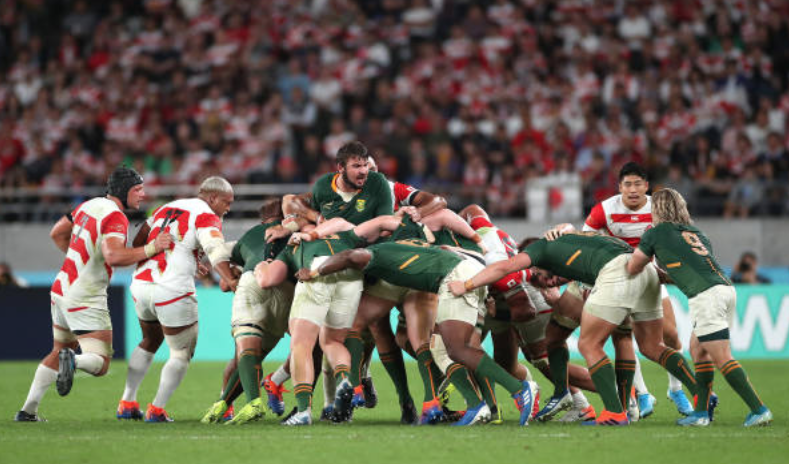DYLAN JACK looks at where the World Cup quarter-final between the Springboks and Japan in Tokyo on Sunday was won and lost.
DEFENCE
Despite coming under enormous pressure from Japan’s attack, the Springboks managed to negotiate the first half and go into the break with a narrow 5-3 lead. The hosts enjoyed 63% of possession in the first half and were dominating the attacking statistics, yet could not break through the Springbok defence.
In total, the Springboks made a total of 148 tackles, missing 20 for a completion rate of 88%. While that statistic in itself is not too much to get worked up about, the Springboks crucially managed 10 turnovers inside their own half. For all of Japan’s style and flair, the physicality and work rate of the Bok defence ensured that the home side got very little in return for their attacking dominance.
Key to the Springboks’ efforts was centre Damian de Allende, who ended the match as the top tackler with 17 tackles and just one missed. The 27-year-old also won three turnovers, two of them inside the Springboks’ half. Lood de Jager was the standout forward in this regard, completing all 14 of his tackles and also poaching a lineout.
Japan struggled to replicate the same effort when they came under pressure in the second half. Their outside backs, in particular, found themselves more exposed as the Boks picked up momentum through some strong carries from their forwards.
SET PIECE
It may not have been the prettiest display from the Springboks, but it was ultimately the power of their pack that pulled them through this game. Before the game it was predicted that the Springboks would be too strong at set piece and aside from giving away a scrum penalty after loosehead prop Beast Mtawarira was yellow-carded, it proved to be so.
The Boks’ opening try, scored by Makazole Mapimpi, illustrated how the pack’s dominance ultimately benefited their backline. The move started with a Bok scrum just outside Japan’s 22. In anticipation of the Boks going to the right, Japan placed flyhalf Yu Tamura as their lone defender on the left to watch Mapimpi. Tamura probably also hoped No Kazuki Himeno and flank Michael Leitch would be able to break quickly from the scrum and help him. However, the Bok scrum turns out to be so dominant, that it ties both Leitch and Himeno in, allowing Mapimpi a free run at Tamura, who he beats to score in the corner.
Japan’s scrum faltered badly in the second half when their starting props, who relatively held their own, were replaced. That cost Japan a couple of penalties when they were chasing the game.
The host nation also struggled when it came to claiming their own ball at the lineout and defending the notorious Springbok maul. Japan lost five of their own lineouts and South Africa were able to use the maul as a weapon.
This cost them the decisive try of the game, scored by Bok scrumhalf Faf de Klerk. The move actually started with a Springbok lineout a few metres inside the South African half. However, the Boks were able to form a massive 50m maul and suck in a few Japanese defenders before Malcolm Marx broke away and offloaded to De Klerk.
ALSO READ: Ambitious Boks must be ruthless
Photo: Cameron Spencer/Getty Images





